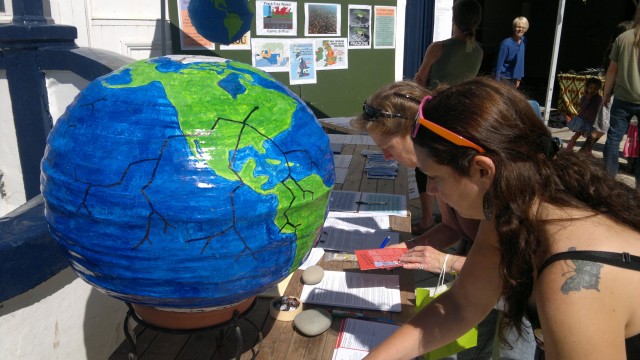Activist Geographies – Introduction
Activist geographies are concerned with action, reflection, and empowerment (of oneself and others) in order to challenge oppressive power relations. As a fusion of theory and practice (praxis), activist geographers seek to forge mutual solidarity with resisting others – communities, groups, social movements, or nongovernment organizations who are challenging various practices of dominating power – through critical collaboration. The objectives can be varied: the creation of participatory spaces of action which are inclusive and antihierarchical; the nurturing of creative interaction with resisting others independent of electoral politics; and conducting direct action whereby 'we' devise a plan to do something, in collaboration with others, and then do it without recourse to external authorities. For an activist geography, or a human geography with an 'action oriented research' agenda, as Rachel Pain described it in 2003, 'relevance' and 'criticality' entail making certain political commitments or commitments to certain kinds of action. Here, commitment is to a moral and political philosophy of social justice, and research is directed both toward conforming to that commitment and toward helping to realize the values that lie at its root.

While the 'anarchist geography' of Prince Peter Kropotkin hinted at a nineteenth-century version of activist geographies, committed to dispelling the territorial bases for unjust power relations associated with 'rulers' of all kinds, it is only relatively recently in the history of human geography that such an approach has become at all widespread. In the late 1960s and early 1970s, many geographers became deeply concerned about the seeming 'irrelevance' of the discipline to the multiple problems facing global society, whether environmental or to do with decaying cities, social unrest, Cold War threats and machinations, and so on. While some, often the spatial scientists like Brian Berry who had come to prominence in the 1960s, concluded that the discipline needed to become more policy relevant, working with and on the 'levers' of state and corporate power, others like David Harvey hoped for a more fundamental assault on all forms of 'establishments', whether in the academy (including standard theories and methods) or in wider society (government, big business, sedimented structures of class inequalities, etc.). Harvey argued for the development of historical materialist 'people's geographies'
that open[ed] the way to the creation of new forms of
society in which common people have the power to
create their own geography and history in the image of
liberty and mutual respect of opposed interests. (Staeheli
and Mitchell, 2005: 359)
However, a cleavage of sorts swiftly emerged between those radical geographers who, in all sorts of ways, often brilliantly and compellingly, turned to Marxist and related philosophies and social theories to inform their critical scholarship, and a smaller banding of scholars who – while often alert to broader conceptual concerns – wished to apply themselves much more immediately and directly to help alleviate social injustices 'on the streets', 'on the reservations', and in diverse other spaces where disadvantaged peoples of all kinds were struggling to survive day by day.
Perhaps the earliest example of deeply engaged involvement 'on the streets', what might be taken as the real birthplace of activist geographies akin to the characterization above, was the 'advocacy geography' of William Bunge, practiced in the so called 'geographical expedition' to poor black inner city neighborhood of Fitzgerald in the US city of Detroit in the late 1960s and early 1970s. Here, a handful of professional geographers and some of their students effectively left the campus to work for the residents (the resisting others) of this multiply oppressed place. In this remarkable experiment, residents called upon Bunge and his co workers to seriously take up subject matters such as ghetto formation and the actions of unscrupulous slum landlords, and more particularly, they asked for assistance in preventing their children from being victims of traffic accidents or getting ill as a result of rat bites in vermin infested housing schemes. These early activist geographers duly researched the relevant patterns and processes, putting their skills in data acquisition, processing, and mapwork to the service of their local hosts, notably when acting as 'advocates' for them in dealings with the municipal authorities (who were prepared to listen to the academics, whereas they seemingly remained deaf to the residents themselves). However, this experiment did not last for long, as the University of Detroit, disturbed by this emerging constellation of academia and activism, put blocks in the way which eventually led to the departure of Bunge from the institution, and to his colleagues and their students returning from the streets to the library. Bunge himself became involved in trying to establish something equivalent in Toronto, while parallel moves briefly fluttered in other cities like London, but by the mid 1970s the promise of advocacy geography had largely petered out, albeit still being remembered today as a beacon of alternative possibilities and arguably an important precursor of more recent attempts at marrying activism with the geographical academy.
Toward More Fully Activist Geographies
Activist Methodologies, Collaborations, and Everyday Life
Responsible Activist Geographies
Activism and Academia: Contradictory Spaces?